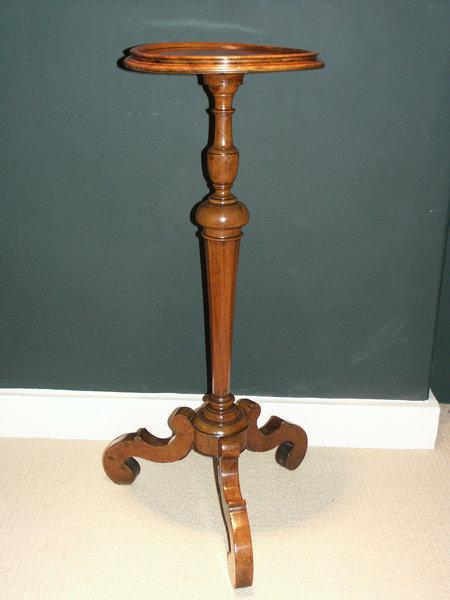A late-17th century, turned, walnut candlestand
10411
The circular top, slightly bowed with age, faced with a deep moulded edge in the solid and retaining its original wooden screw fixing. The solid stem with baluster turning above an octagonal column. Standing on three elaborate scroll legs. English, last quarter of the 17th century.
The carpenter has used a solid top faced with an unusually deep moulding above an octagonal column to display the quality of the walnut. The combination of baluster, and mushroom turnings above the column displays the skill of the turner, and creates fluidity, variety of form and emphasises the quality of the walnut grain. These turnings hold and balance the form of the top which retains its original screw mechanism. The sweeping, scroll feet balance the proportion and fluidity of the candlestand, and give it great presence. Due to their delicate form and utalitarian nature, surviving 17th century candlestands are rare, particularly in this condition.
Moveable stands to support a candlestick were intended to supplement the fixed lighting arrangements of rooms. The evidence of inventories suggests that they did not become common in France until about 1650 when they accompanied fine tables and cabinets. Such stands, being sometimes in the form of gueridons. The Academy of Armory, published in 1688, defines a candle-stand as a "little round table, set upon one pillar or poste which in the foote branches itselfe out into three or four feete or toes ... for its fast and steddy standing".
17th Century
1675
Walnut
England
Phillips of Hitchin










